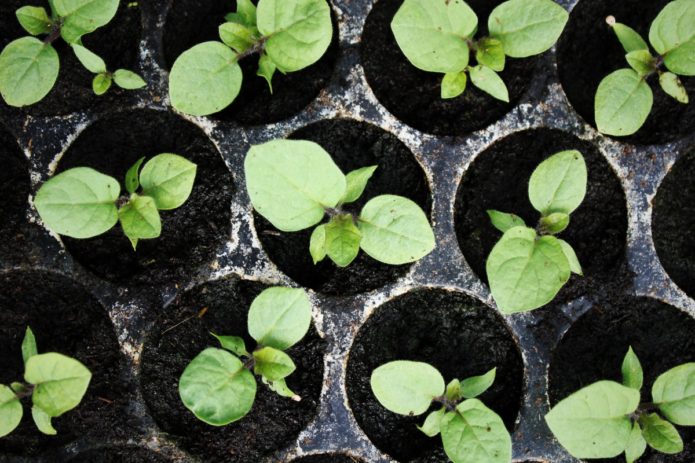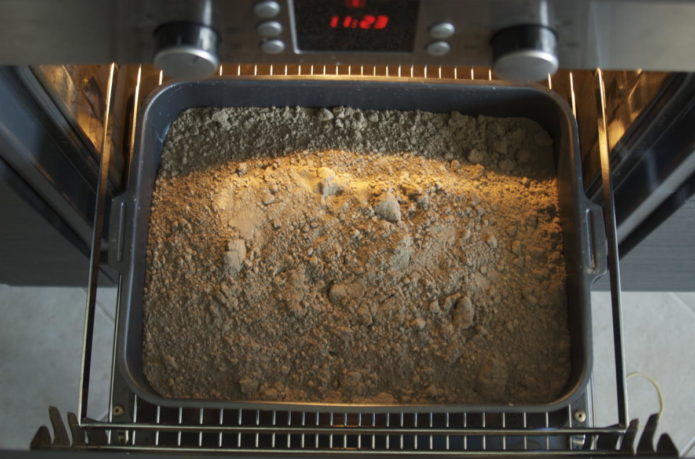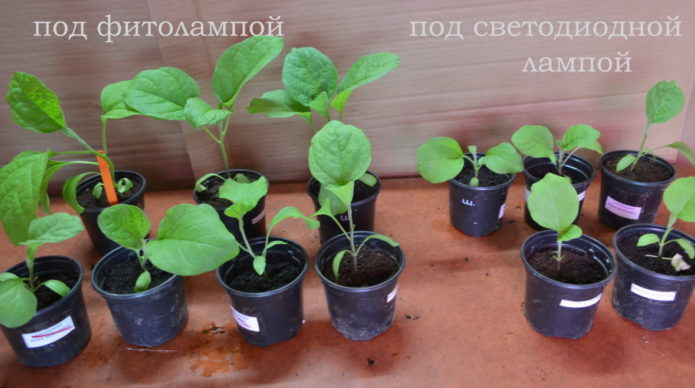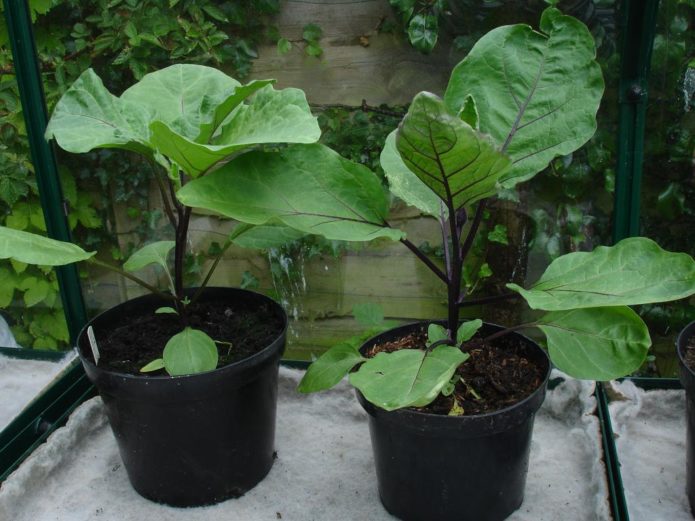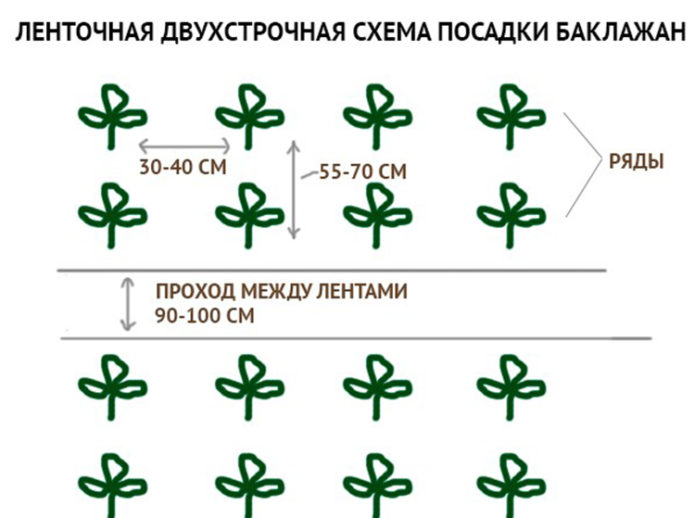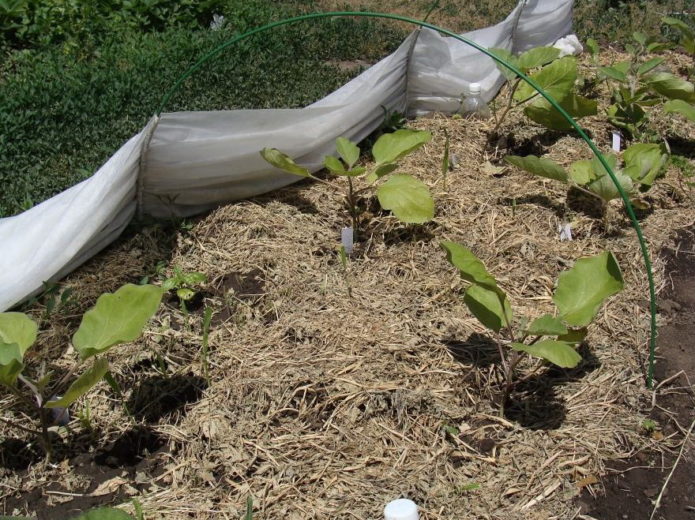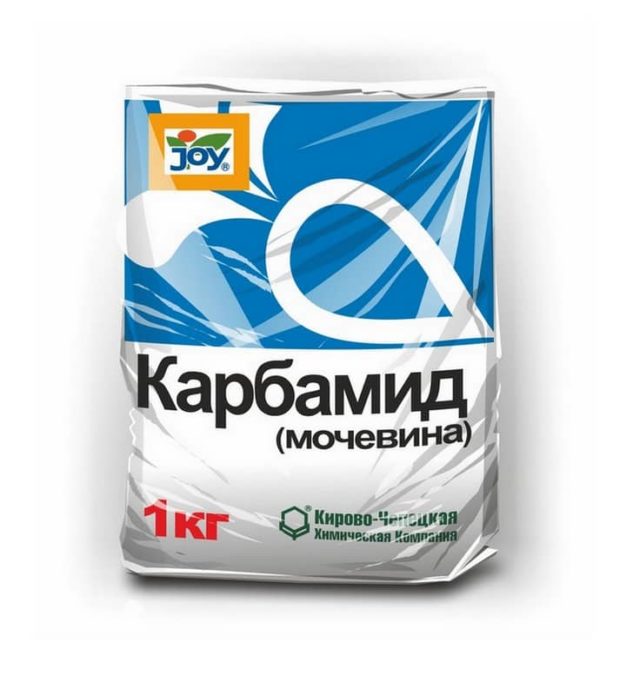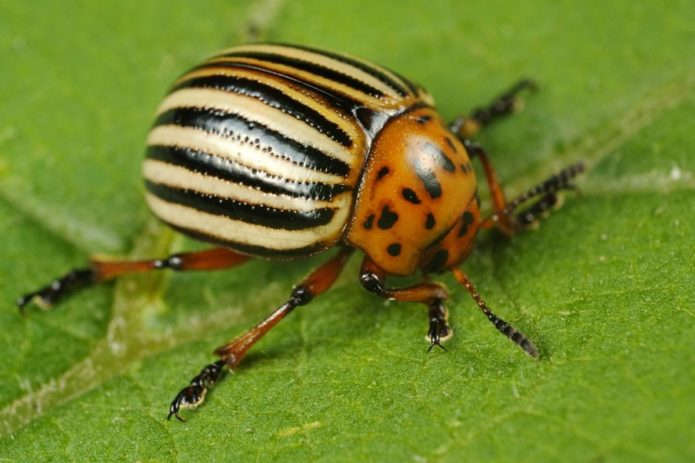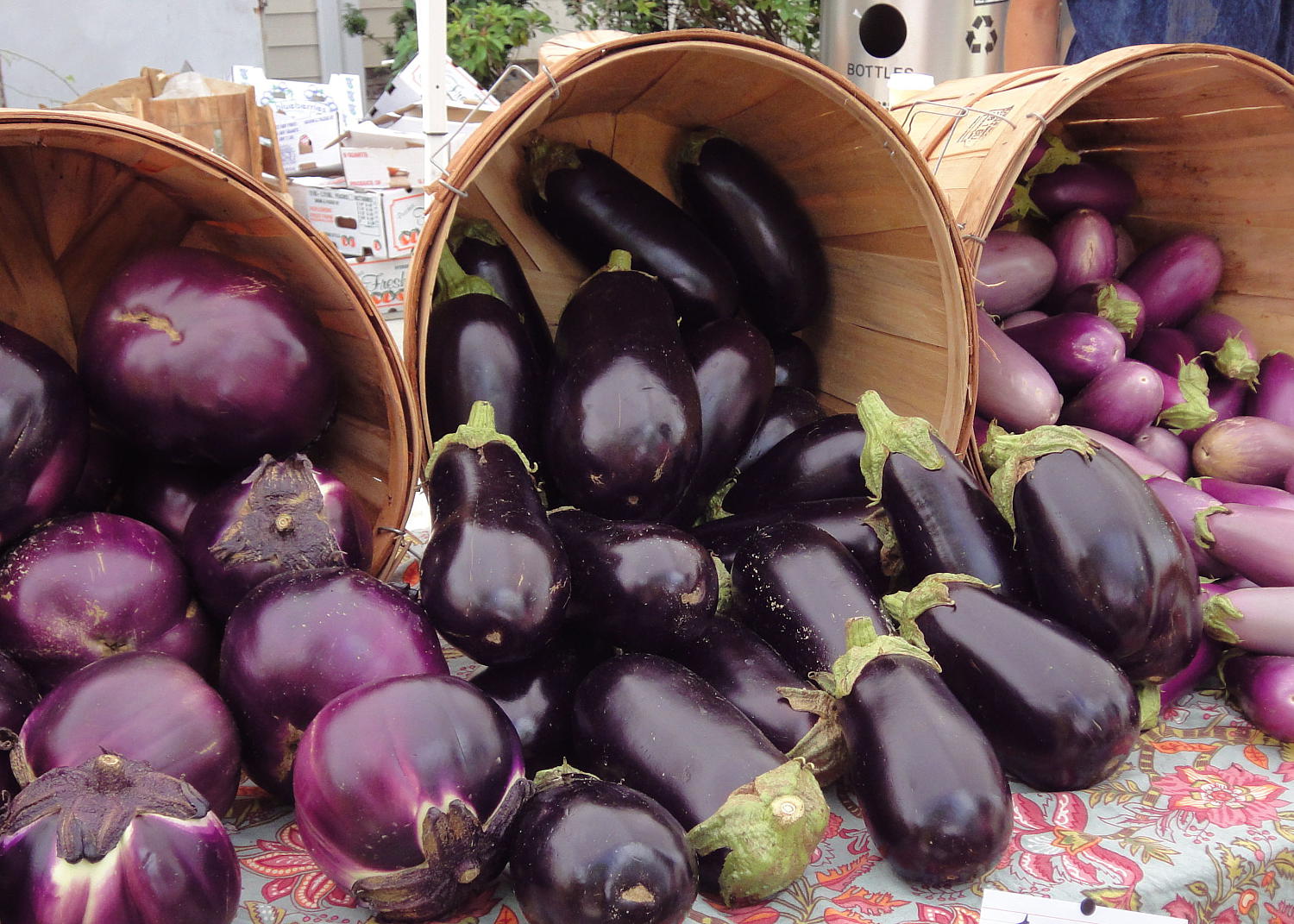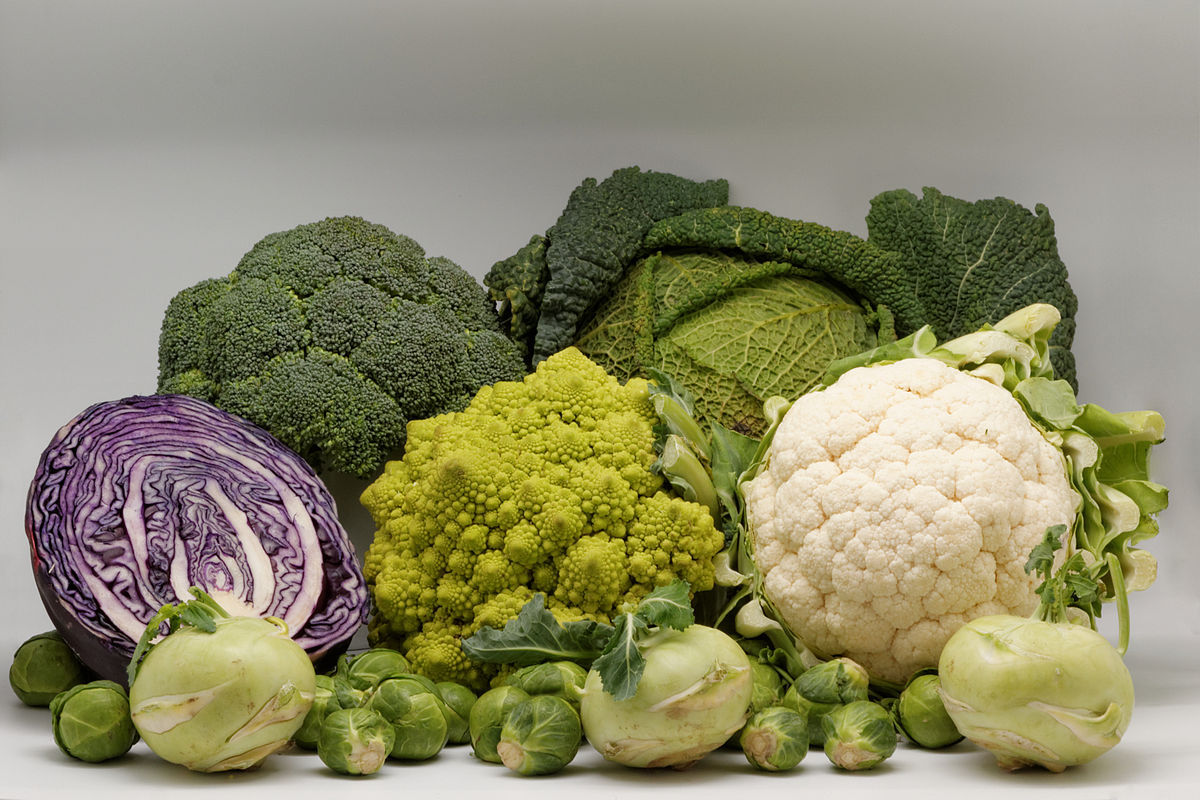Among nightshade crops, eggplant is considered the most capricious. When the weather changes or the slightest violation of agricultural technology, the plant drops flowers and ovaries. It is clear that not everyone can enjoy their own grown eggplants. However, there is a hybrid variety - Clorinda, forgiving gardeners' mistakes.
Content
Description of the variety Clorinda F1
Unpretentious eggplants are rare. One of them is the Clorinda hybrid, developed by the Dutch company Monsanto, for open ground and greenhouses. It is an early maturing medium early variety that is suitable for growing in all regions. The plant forms an erect shrub of medium height, in greenhouse conditions - above 1 meter. The tops of the eggplant are green, and the stem is purple. Medium leaf with a jagged edge. The variety is distinguished by short internodes.

The Dutch eggplant variety Clorinda F1 is versatile, they are grown both in greenhouses and in the garden
The dark purple oval fruits weigh from 300 to 320 g. Gardeners note the excellent taste of eggplant - delicate, completely without bitterness. The appearance is also impressive: the ripe fruit shines like a glass Christmas tree toy. The flesh on the cut is whitish, dense, there are very few seeds.
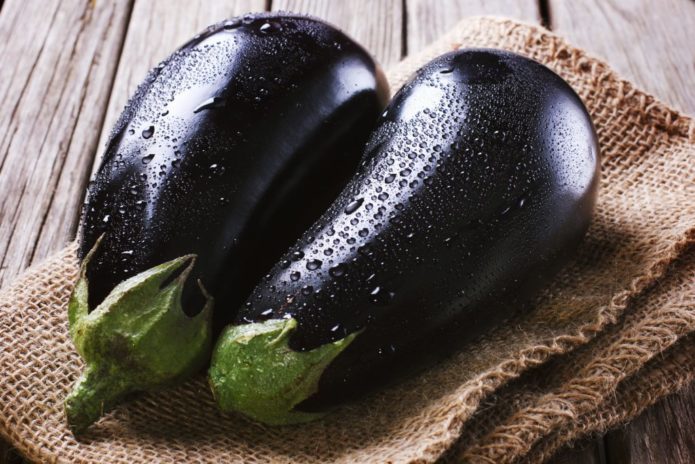
Clorinda has very thick and strong stalks, you cannot tear off the fruit with your hands, you will have to use a pruner
The average yield of a hybrid is only 2.8 kg per 1 m2but it retains the ovaries when the other eggplants drop them. The fact is that old varieties are plants with short daylight hours. Therefore, they set fruit in August when the day is shortened. And the Clorinda hybrid is not tied to the length of the day and begins to bear fruit earlier than others. In addition, most varieties do not knit in cold weather. Clorinda is not a hindrance to unfavorable conditions. Another advantage of the variety is resistance to the tobacco mosaic virus.
Features of growing a hybrid of Clorinda
Even with unpretentious eggplants, you have to tinker. Both hybrids and varieties are grown through seedlings. The right time for sowing Clorinda is at the end of February. In any region, you should not sow a hybrid later than mid-March, because this crop is slowly developing.
Sowing seeds
Inlaid, pelleted or treated seeds are not soaked before sowing. Otherwise, fertilizers or fungicides will wash off. The seed status is marked on the bag. Ordinary seeds require pre-sowing treatment. To wake up from a state of rest, first they are poured into a strainer and placed in hot water with a temperature of 45-50about C for 2-3 minutes. Seed material of doubtful origin is additionally soaked in a 2% solution of potassium permanganate for 20 minutes.
Then the eggplants are sown in separate glasses or cassettes to avoid picking, since this culture does not tolerate root damage and is inhibited in growth.For sowing, purchased universal soil for seedlings or a mixture of peat, garden soil, compost and sand is used. The self-prepared soil is pre-calcined in the oven.
Clorinda seeds are sown in a moist substrate to a depth of 1-2 cm. To prevent the top layer of the earth from drying out, the crops are covered with a film, which is removed once a day for ventilation. But it is better to use lutrasil, which does not require additional ventilation due to the perforated structure. Containers with seeds are placed in a warm place with a temperature of 25-28about C. Seedlings are expected in 7-15 days. Then the cups are transferred to the windowsill.

It is convenient to sow eggplants with a stick, with which the seeds are pressed into the soil to the desired depth
Growing seedlings
The seedlings are kept in the cold for the first week: during the day - at 14-16about C, at night - at 10-12about C. This regime will allow the root system to develop well. The second week, night temperatures are raised to 16about C, and daytime - up to 25about C.
If the seedlings are grown in a common pot, then picking is done in the phase of 2-3 true leaves. When transplanting, the eggplant is deepened along the cotyledon.
If the seedlings have mastered all the soil in a glass, they must be transferred into a large bowl, being careful not to damage the roots.
Eggplants are watered only with warm, settled water as the soil dries out. So that the seedlings do not get sick with the "black leg", the surface of the soil is sprinkled with pre-calcined coarse sand mixed with ash. Every 2-3 weeks, antifungal drugs are added to the irrigation water: Trichodermin, Previkur, potassium permanganate. The listed activities are necessary provided that the seedling soil has not been disinfected.
"Black leg" is a generalized name for a group of diseases caused by the simplest bacteria and fungi that affect the roots of young seedlings.
To prevent the eggplants from stretching, in the morning and in the evening they are illuminated with fluorescent, diode or phytolamps, placing them at a distance of 30-50 cm. Ideally, the first 3 days Clorinda should be provided with 24-hour lighting, then 12-hour daylight hours for two weeks.
When the third true leaf appears, the seedlings are fed with mineral fertilizers. To prepare top dressing, dissolve 1 tbsp in a ten-liter bucket. l. any complex mineral fertilizer, for example, nitroammophoska. The second feeding is done 2 weeks before planting in the garden.
An important procedure for increasing the vitality of eggplants is hardening. 2 weeks before disembarkation, the seedlings are taken out into the street, first for 30–40 minutes. Every day, the time spent in the air and the sun gradually increases until the seedlings get stronger.
Landing in open ground
Clorinda is planted in the garden in early May in the south, in other regions - from mid-May, when warm weather sets in. A well-formed seedling has 7-9 leaves and reaches a height of 25 cm.
The beds for the hybrid are prepared in the fall. These vegetables bear fruit abundantly only on loose soil, therefore heavy loams facilitate the introduction of compost, humus, sand. Rapidly drying sandy soils are enriched with components that retain moisture: peat, rotted sawdust, powdered clay. All of these additives are brought in for digging. At the same time, the soil is fertilized with superphosphate (1-2 matchboxes per 1 m2) and any potash fertilizers according to the instructions. You can replace mineral fat with ash: 2-3 glasses per 1 m2.
Clorinda is seated in a two-line ribbon method. Leave between the bushes - 30-40 cm, between the rows - 55-70 cm, the passage - 90-100 cm.
When planting, they try not to destroy the earthen lump.Add 2-3 handfuls of compost or humus to the planting hole, 1/2 glass of ash. The above can be replaced by 1 tbsp. l. complex mineral fertilizer. Planted and watered eggplants are mulched with dry soil or hay. The plants will take root for the next week, so you shouldn't water them.
Eggplant care: shaping, watering, feeding
Clorinda requires a garter to a trellis or pegs. The plant forms a powerful bush, which is formed if desired. When the plant reaches 30 cm in height, pinch the top. Then they wait for the growth of the stepsons, leave 4–5 of the strongest, pluck the rest. Over time, the lower leaves wither and turn yellow, they must be cut off. Underdeveloped fruits are also removed.
Eggplants are a moisture-loving culture, so they are watered every 3-5 days, depending on weather conditions. If nutrients were not added to the hole, 2 weeks after planting, the eggplants are fed with nitrogen: fermented slurry, weed infusion or urea.
When the eggplants bloom, they switch to potassium-phosphorus fertilizers: superphosphate, potassium sulfate, potassium magnesia (1 tablespoon per bucket of water). Instead of purchased agro-food, they also use a daily infusion of wood ash: 2 glasses per bucket. Ideally, 2 nitrogen and 2-3 potassium-phosphorus dressings are carried out with a break of 14 days. These measures will increase the yield of Clorinda.
Treatments for diseases and pests
Spider mites and the Colorado potato beetle do the greatest damage to the eggplant Clorinda. To combat them, plants are sprayed with biological insecticides or Aktara chemical, observing the waiting times indicated on the package. Other popular remedies are also suitable for the beetle: Iskra, Killer, Confidelin, Mospilan. During fruiting, it is better to use the biological product Aktofit.
Opponents of poisons use a folk remedy for ticks: half a bucket of onion peel is poured with boiling water and insisted for a day. After straining, the leaves are sprayed from the top and bottom. If the plants have lost a lot of foliage, add 1/2 tablespoon of urea to the infusion.
For the prevention of hybrid diseases, Fitosporin-M, which is safe for humans and insects, or a garlic agent is used. 200 g of crushed garlic cloves are insisted in three liters of water. Then filter the infusion and add 3 liters of water. Preventive spraying is carried out once a week.
For the treatment of late blight and other fungal infections, fungicides Kvadris, Revus, Consento and copper-based preparations, for example, HOM, are used.
Growing eggplant Clorinda F1 - video
Reviews
The Clorinda F1 hybrid is the first self-grown eggplant.At that time, she did not understand much, reading the description of the variety on the package, did not know the meaning of some terms, and chose plants from the picture. I put them in a greenhouse in the garden. And then the bushes surprised me! Firstly, they are tall and powerful, and secondly, they are well leafy, which means they protected the fruits from the scorching sun. About the harvest: the fruits were set quickly and abundantly. They looked very attractive, with dense, not watery pulp. Fruit weight is quite impressive, 600-800 grams. Well, the taste ... yes. There are almost no seeds. The baked vegetable tasted like butter and consistency. I have such an association. Although, unambiguously, in order to harvest the crop, you will have to plow.
I didn’t like the shape of Clorinda, I love slender eggplants, and she didn’t shine with productivity. The fruits were large, but small.
Last season in Lipetsk, the earliest Clorinda F1 was not. Hybrids Bebo, Slice-Wright, Valentina began to be picked for food on June 30, Clorinda and Marzipan on July 4. But it was a very good season for eggplant. Clorinda did not weigh individual fruits, but they were definitely less than half a kilogram.
Sowed three varieties of eggplant: Bourgeois, Sailor and Clorinda. Seedlings differ tenfold: Clorinda will soon bloom. She was the first and amicably ascended and now the difference is like an elephant and a pug. I recommend Clorinda eggplant to everyone.
In the absence of additional lighting, it doesn't make sense to sow Clorinda too early. During the germination of seeds, a high temperature is needed, and after the emergence of shoots, it is lowered for a short time so that the seedlings grow strong. Plant the hybrid in light fertile soil, water and feed on time, carry out preventive spraying. Then the plant will thank you with an early harvest in any weather.

